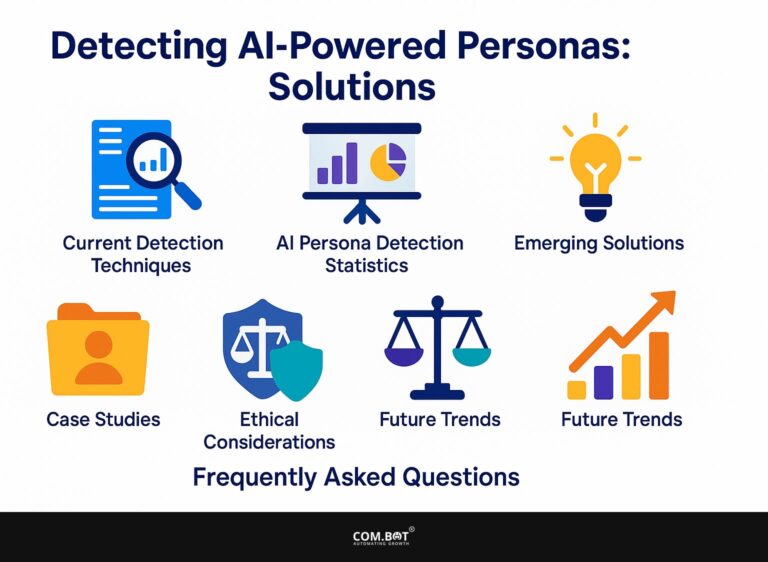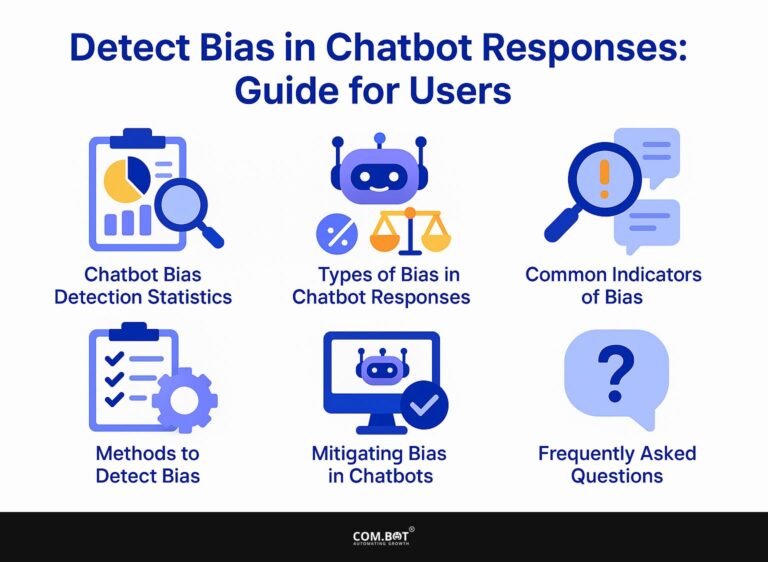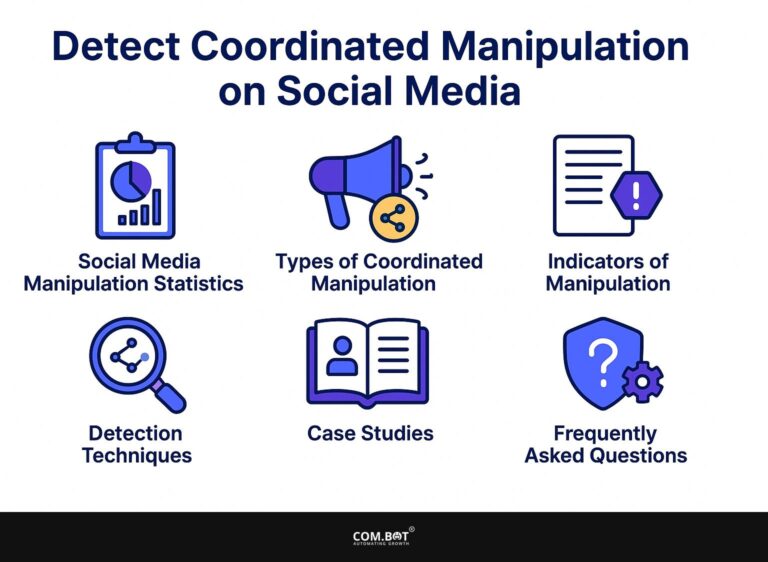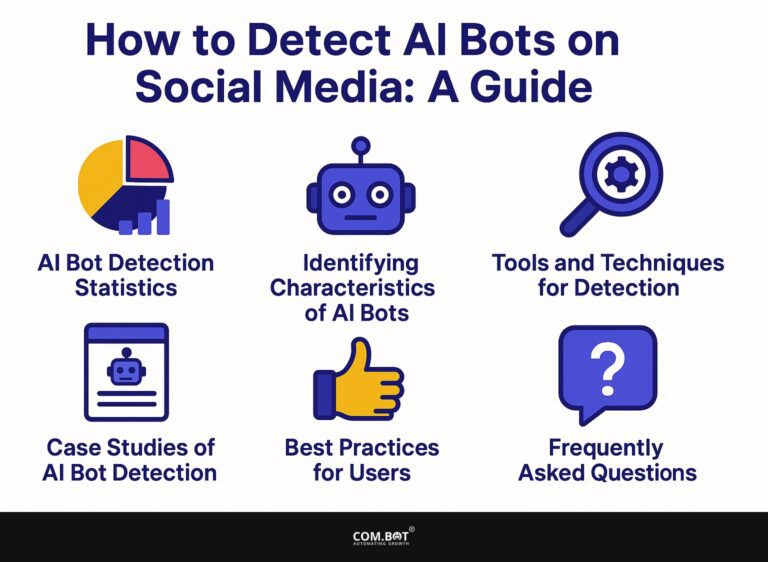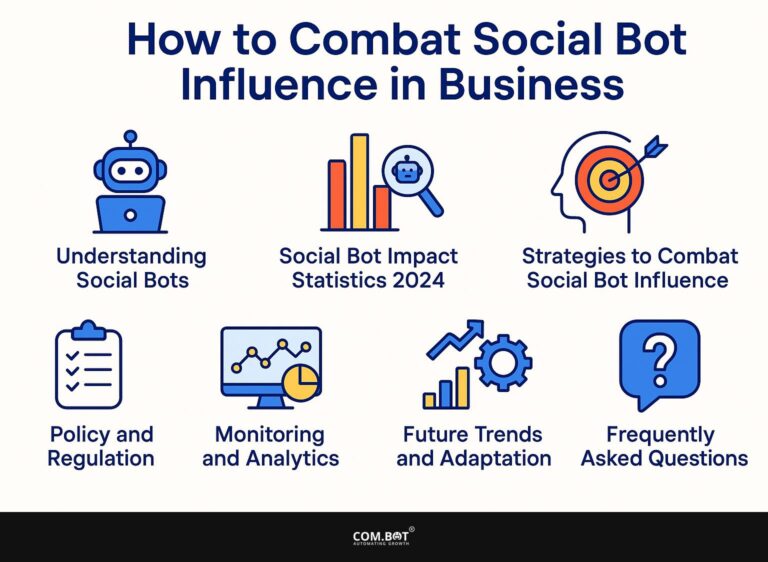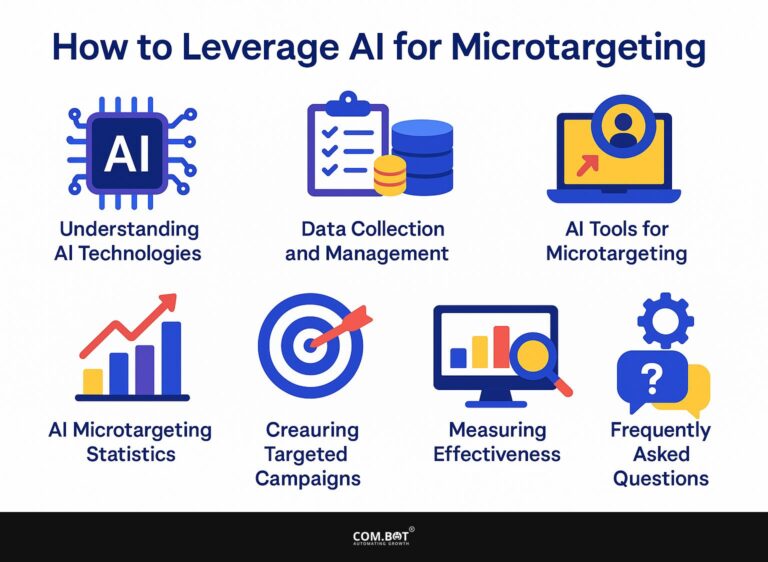How to Create Effective AI Bot Personas
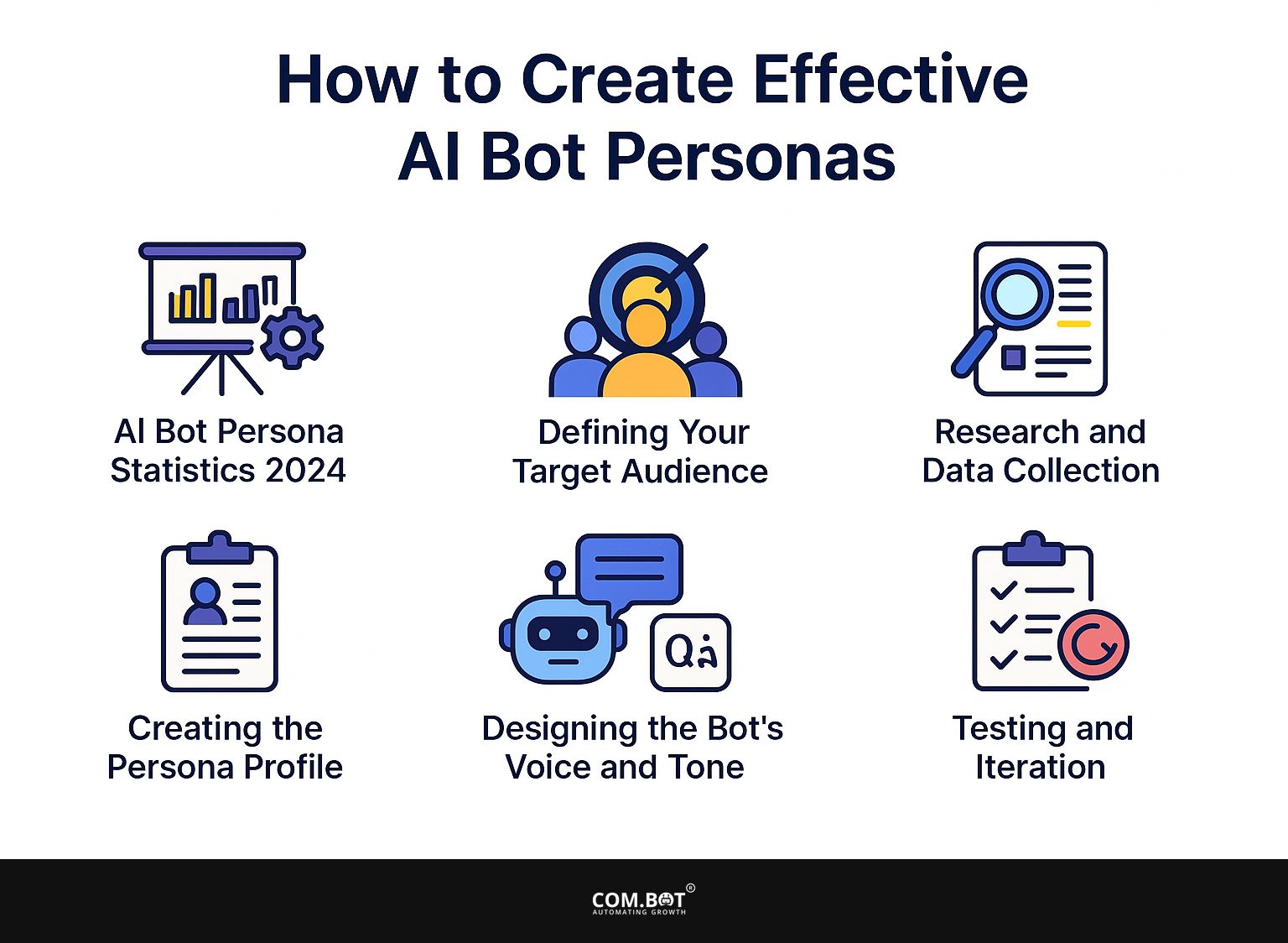
To make an engaging AI chatbot, start by developing a memorable chatbot personality that connects with users. By using natural language processing, businesses can improve how customers interact with them and increase user involvement.
In this article, we’ll look at how to create AI bot personas that match your audience’s needs and expectations, making sure your chatbot communicates well and builds strong connections. Change your AI chatbot into a reliable virtual helper!
Key Takeaways:
- Understand the importance of AI Bot personas in creating successful and relatable chatbots.
- Do detailed research and collect user information to make precise and useful persona profiles.
- Keep testing and improving your bot characters using feedback from users to provide a steady and engaging experience.
- 1 AI Bot Persona Statistics 2024
- 2 Defining Your Target Audience
- 3 Research and Data Collection
- 4 Creating the Persona Profile
- 5 Designing the Bot’s Voice and Tone
- 6 Testing and Iteration
- 7 Frequently Asked Questions
- 7.1 1. What are AI bot personas and why are they important?
- 7.2 2. How do I create effective AI bot personas?
- 7.3 3. What elements should I consider when creating AI bot personas?
- 7.4 4. How can I make my AI bot personas more engaging?
- 7.5 5. Do I need to continuously update my AI bot personas?
- 7.6 6. Can I use existing reference data to create AI bot personas?
1. Importance of AI Bot Personas
AI bot characters provide a consistent experience that matches brand values and improves how well customer support works. Defined personas help tailor interactions, leading to improved customer retention.
For instance, Lush’s NA Bot embodies the brand’s playful essence, engaging users with friendly, relevant conversations. Statistics show that brands with well-defined personas see a 30% increase in customer satisfaction.
To implement this, begin by researching your target audience’s demographics and preferences. Use tools like UserPersona or Xtensio to create detailed profiles. Regularly update these personas using feedback and interaction data to keep your bot useful and able to meet customer needs.
AI Bot Persona Statistics 2024
AI Bot Persona Statistics 2024
Chatbot Usage and Engagement: Chatbot Adoption and Satisfaction
Chatbot Usage and Engagement: Chatbot Efficiency and Economic Impact
Chatbot Usage and Engagement: User Preferences and Chatbot Capabilities
AI Bot Persona Statistics 2024 gives a complete look at how chatbots are used, how people interact with them, how well they work, and what users like. These statistics reflect the growing integration of AI chatbots in both B2B and B2C sectors, highlighting their impact on business operations and consumer interactions.
Chatbot Usage and Engagement data reveals high projected adoption rates, with 88% of users expected to interact with chatbots by 2025. Businesses are focusing on working more quickly and connecting better with customers, which is pushing this trend forward. Currently, 58% of B2B companies and 42% of B2C companies have adopted chatbots, indicating a significant presence in diverse business models. Consumer satisfaction with chatbot interactions stands at 69%, mirroring the percentage of users willing to use chatbots for instant responses, underlining their value in providing timely support.
Chatbot Efficiency and Economic Impact highlights the economic advantages of chatbots, predicting a reduction in time spent 2.5 billion hours for businesses by 2025. The cost savings per interaction amount to $0.60, demonstrating significant operational cost reductions. Chatbots also improve sales conversion rates, showing a 3x improvement over traditional forms and a 2.5x increase using generative AI Showing how they improve business results by getting more customers involved and making operations easier.
User Preferences and Chatbot Capabilities data highlights key user expectations and features. A notable 59% of users expect chatbot responses within 5 seconds, reflecting the demand for quick service. The preferred feature of 24/7 availability is valued by 64% of users, showcasing the importance of uninterrupted service. Additionally, 74% of consumers use bots for simple queries, while 40% are indifferent to human or AI resolution, suggesting a growing acceptance and trust in AI-driven customer service solutions.
Overall, the AI Bot Persona Statistics 2024 shows how chatbots are changing business and customer communication today. Their efficiency, cost-effectiveness, and ability to meet user preferences make them indispensable tools in enhancing customer experience and operational efficiency.
2. Overview of the Persona Creation Process
To build a successful AI bot persona, you should study your audience and decide on traits that connect with them. To achieve this, begin by finding important information about your users using tools like UserTesting or Google Surveys. These can show details like age, location, and what they are interested in.
Next, find out why users do what they do by talking to them in interviews or group discussions to learn about their goals and problems.
Create personality traits that match your brand by building a persona that shows empathy, humor, or professionalism, based on what your audience likes. This organized method makes sure your AI bot interacts well with users and improves their experience.
Defining Your Target Audience
Knowing who your target audience is important for creating an AI bot persona that satisfies their needs and improves user interactions.
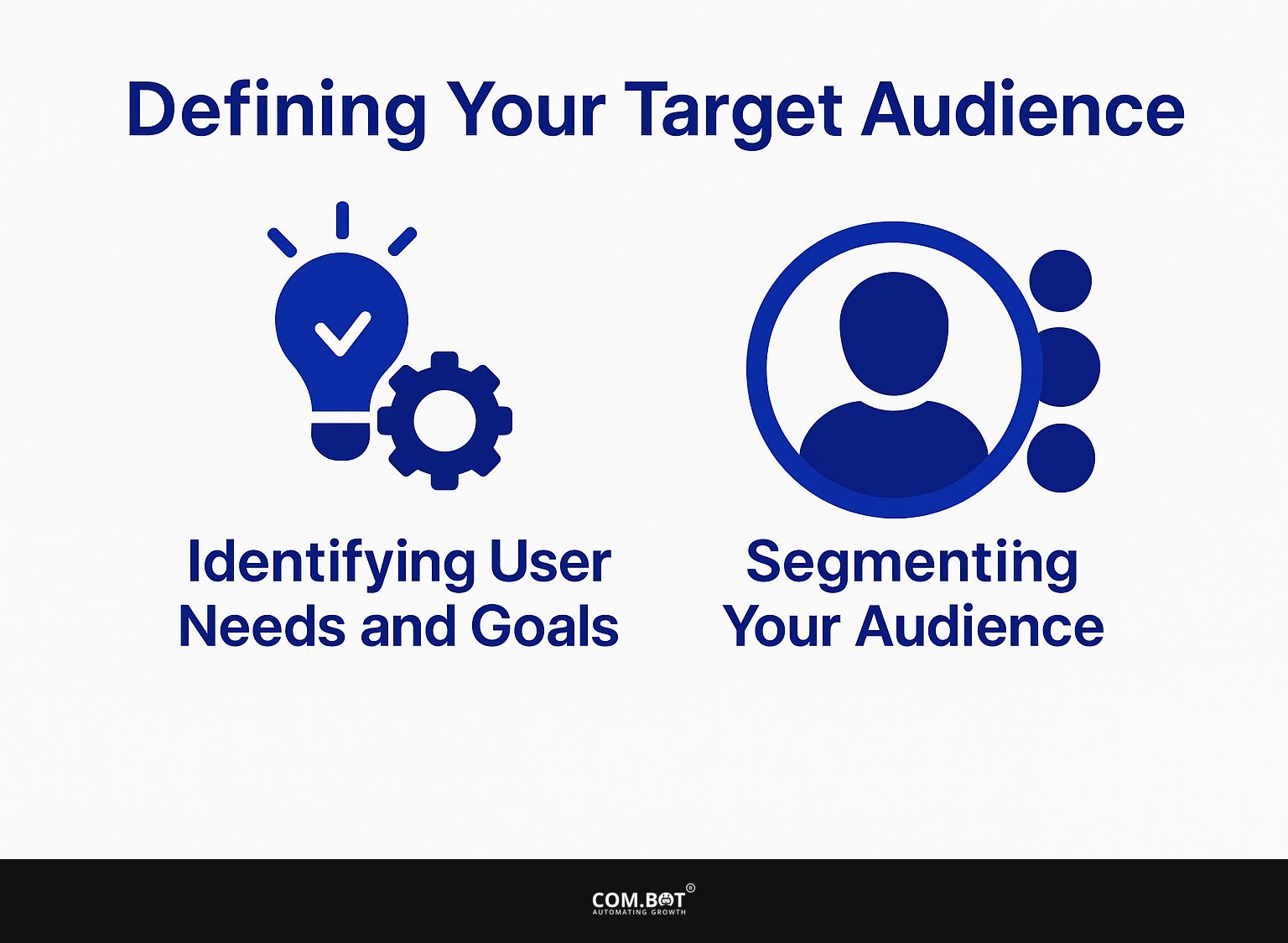
1. Identifying User Needs and Goals
Use tools like Google Forms or Typeform to collect information on what users need, want, and expect from a chatbot. Once you’ve collected responses, use a spreadsheet to analyze the data and identify trends.
Look for common themes in user preferences, such as desired features or response times. Create user profiles using this information. For example, if 80% of people want fast replies, make sure your chatbot focuses on that.
Set specific benchmarks, like response time under five seconds, to measure success against user expectations.
2. Segmenting Your Audience
Segmenting your audience will help tailor the chatbot experience to different user types, enhancing engagement and satisfaction. To effectively segment your audience, start by collecting and analyzing specific data types.
For example, use demographic information like age and location to find your main users. Pair this with behavioral data from your chat logs to understand interaction patterns.
Consider psychographic data-interests and values-by surveying users or analyzing social media activity. Tools like HubSpot or Google Analytics help manage different campaigns, enabling you to customize messages for each audience, improving the user experience and maintaining user engagement.
Research and Data Collection
Studying user comments and looking at other bots helps create strong AI bot identities. Those curious about the technical nuances might appreciate our insights on the detection of AI bots on social media.
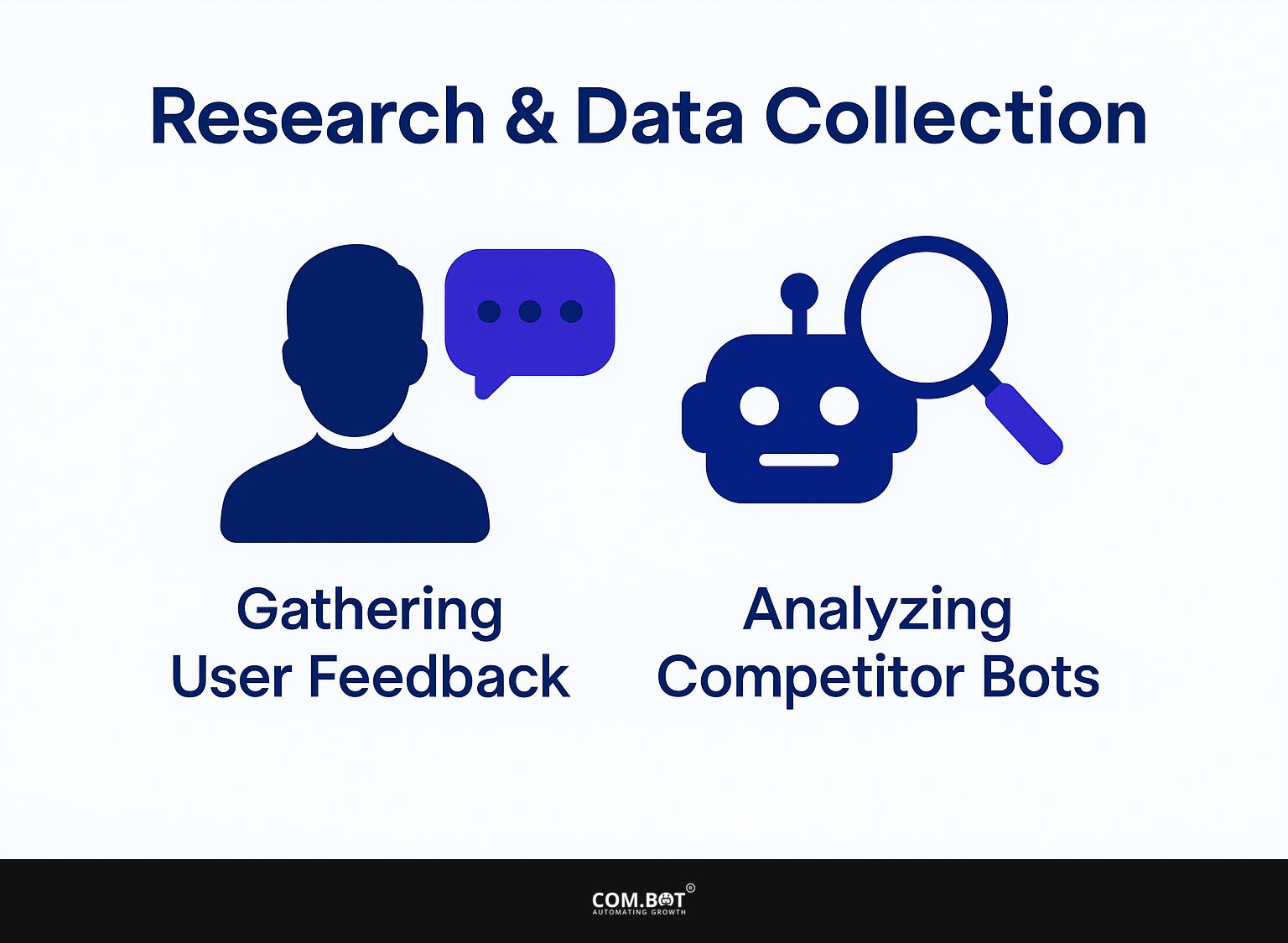
1. Gathering User Feedback
Collect feedback through tools like Zendesk or SurveyMonkey to understand user interactions with existing chatbots. Begin by creating a feedback form that includes specific questions about user satisfaction, clarity, and ease of use.
For instance, ask users to rate their experience on a scale of 1 to 5. Once you’ve collected the responses, analyze them for common themes, such as frequent confusion over certain commands.
Make changes based on this information; for instance, if a lot of users misunderstand a command, try rewording it to make it clearer. A real-world example is a company that revamped its bot script after user input, leading to a 30% increase in user satisfaction.
2. Analyzing Competitor Bots
Evaluate competitor bots using platforms like ChatBot or Drift to identify strengths and weaknesses in their personas.
Start by analyzing the top three competitors in your niche, such as Intercom, ManyChat, and Tidio. Interact with their bots to observe engagement strategies-note how they respond to inquiries, the tone they adopt, and how they handle complex questions.
Record features like personalization techniques or escalation to human support. Use this data to develop your bot’s personality, ensuring it resonates with your target audience and addresses any flaws you’ve found in competitors’ strategies.
Creating the Persona Profile
Creating a thorough user profile involves collecting details about their age, gender, and habits that shape how they use a product.
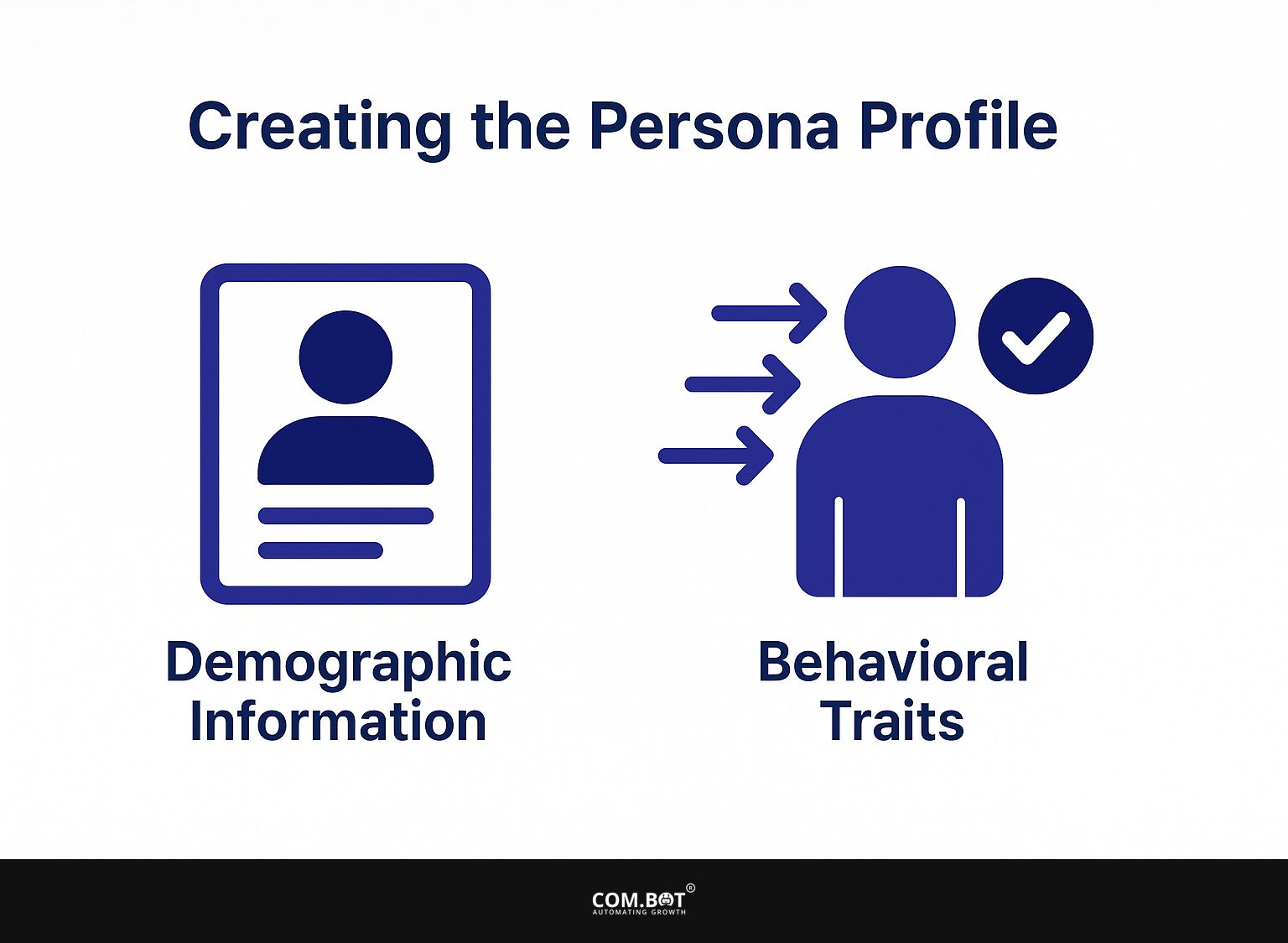
1. Demographic Information
Details like age, gender, and location provide fundamental knowledge about the users of your chatbot.
To gather this demographic data, use Google Analytics to look at website visitor information. This tool provides detailed information on user age, gender, and location.
Next, use Facebook’s tool to find out more about the people who engage with your content on social media, such as which age groups or locations are most active.
Combine this information to make user profiles, showing different audience groups. These personas can help your chatbot reply in ways that match the unique characteristics and likes of your users.
2. Behavioral Traits
Finding behavioral traits means studying how people use chatbots to make interactions interesting and appropriate. To effectively analyze user interaction data, start by examining response times and common queries.
Use tools like Google Analytics to collect numerical data, and platforms like Hotjar to get detailed information through heatmaps and session recordings.
Next, identify patterns, such as frequently asked questions or peak usage times, which indicate user preferences. Change your chatbot’s answers based on these results to exactly match what your users want and like, for a more personal conversation.
Designing the Bot’s Voice and Tone
How your AI bot sounds and expresses itself is important for building a relationship with users and supporting brand identity.
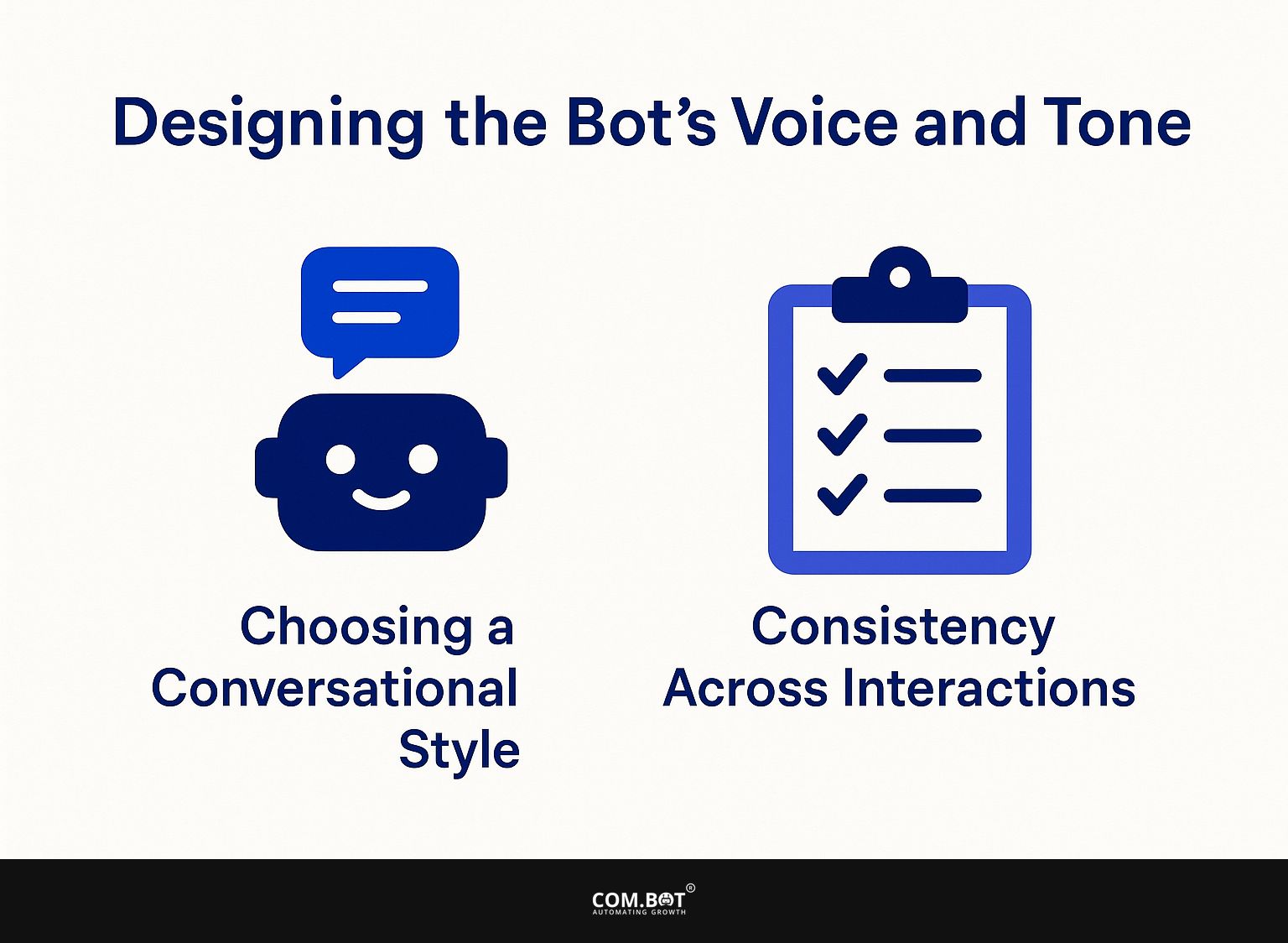
1. Choosing a Conversational Style
Choosing how you communicate-such as being friendly, formal, or playful-can greatly influence how users engage and feel.
To make the bot sound more friendly, start by choosing its personality. For example, a friendly tone might include casual words and emojis, while a formal style uses exact language and a polite manner.
Next, draft sample interactions, considering common user queries and responses. Evaluate these styles with focus groups to collect opinions; tools like UserTesting or Lookback can help with this process, letting you adjust the tone more based on actual user experiences.
2. Consistency Across Interactions
A chatbot should use a consistent style in every conversation so users can trust and rely on the brand. Start by creating clear tone guidelines that explain your brand’s specific language style and how to reply.
Check chatbot conversations often to make sure they follow these rules. Tools like Drift enable you to monitor interactions in real-time, adjusting chatbot responses based on user sentiment.
For even greater consistency, consider training your AI with a diverse dataset reflective of your brand voice, helping it recognize and replicate the desired tone naturally across various interactions.
Testing and Iteration
Testing and adjusting your AI bot persona helps improve results and increase user satisfaction. A key component in this process is gathering valuable insights from users. Curious about how different feedback collection methods can enhance your AI bot’s performance? Discover effective strategies that can elevate user interaction.
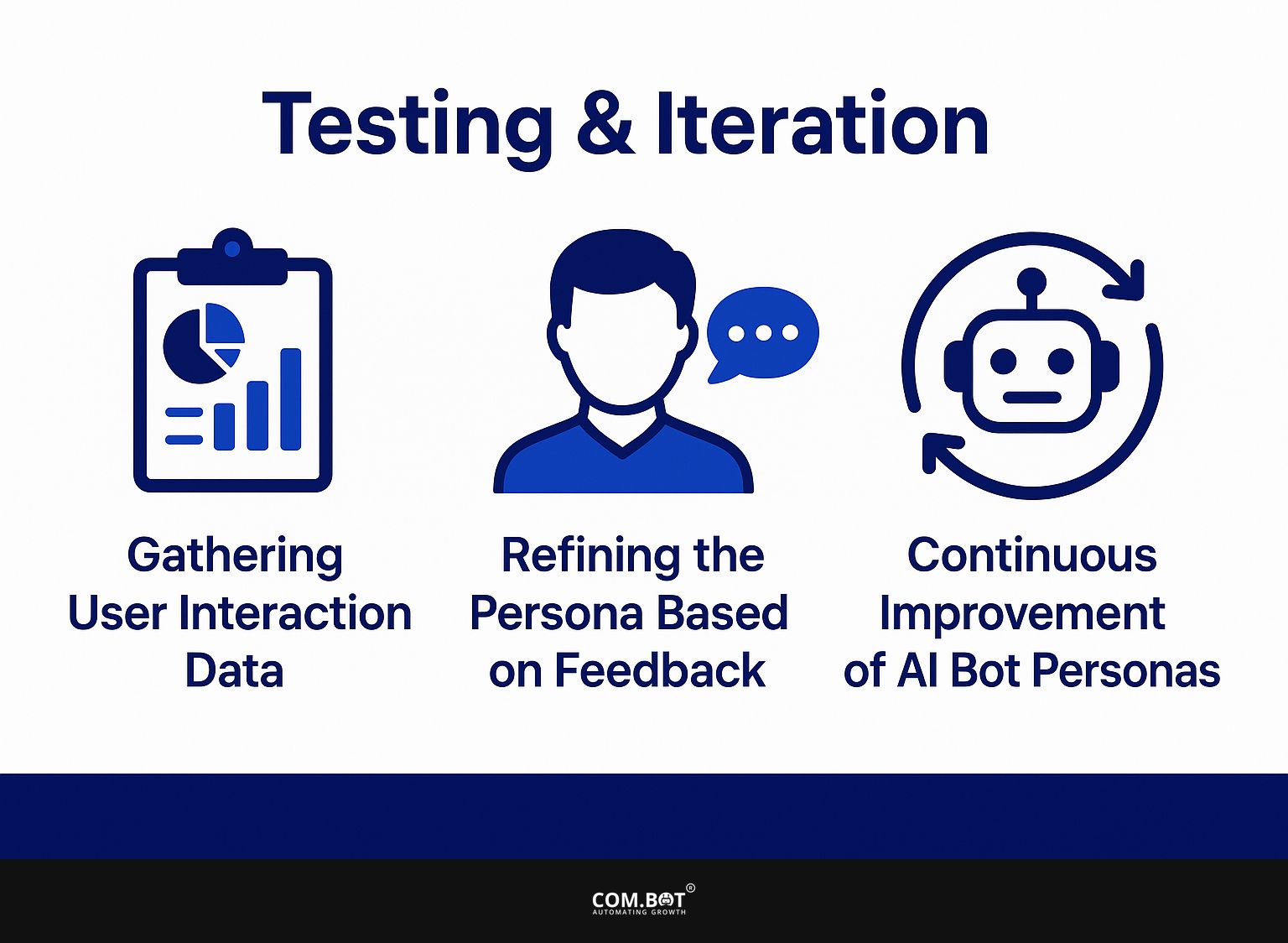
1. Gathering User Interaction Data
Use tools like Google Analytics and Chatbase to gather and study data on how users interact.
- Start by setting up Google Analytics to track user behavior on your website. Focus on key metrics such as engagement rates and bounce rates to understand user interaction.
- Next, use Chatbase to analyze user questions and measure how well the chatbot performs. Monitor specific engagement points, like the average session duration, to identify drop-off areas.
- Look at this data often to gather useful information that helps you better understand your audience. For example, adjusting content to align with typical user paths can make the experience on the platform much better.
2. Refining the Persona Based on Feedback
Improve your AI bot’s personality by frequently using user feedback and interaction data in the development process. Begin by scheduling time every two weeks to review user feedback.
During these reviews, organize feedback into practical suggestions, paying attention to tone and how correct the responses are. Once you find common patterns, make adjustments and run A/B tests with small groups to see what’s better.
Tools like SurveyMonkey make it easier to gather and review feedback, while platforms like UserTesting help in checking how users engage with your service. This repeated method improves the bot’s effectiveness and makes its character fit better with what users want.
3. Continuous Improvement of AI Bot Personas
Regularly updating and refining AI bot personas can lead to sustained user engagement and stronger emotional connections with your audience.
To succeed in this, first carry out user feedback surveys twice a year. Understand what users appreciate or dislike about interactions with your bot.
Then, analyze interactions to identify common questions or requests that may reveal gaps in the bot’s capabilities. Tools like Microsoft Azure’s Bot Framework can monitor how users interact.
Adjust persona traits based on new language trends and user demographics to keep the bots relevant and improve user connections.
Frequently Asked Questions
1. What are AI bot personas and why are they important?
AI bot personas are fictional characters that represent the behavior, characteristics, and goals of an AI bot. They are important because they help create a relatable and engaging experience for users, increasing the effectiveness of the AI bot.
2. How do I create effective AI bot personas?
To create effective AI bot personas, you should start by defining the purpose and goals of your AI bot. Then, identify the target audience and their needs and preferences. Finally, use this data to build a personality and actions for your bot that match its goals and connect with your audience.
3. What elements should I consider when creating AI bot personas?
When creating AI bot personas, you should consider the bot’s purpose, target audience, personality traits, communication style, and tone. You should also think about how the bot will interact with users and how it will handle different scenarios and questions.
4. How can I make my AI bot personas more engaging?
To make your AI bot personas more engaging, you can add a human touch by giving them a name, personalizing their responses, and using humor or empathy in their interactions. You can also use storytelling elements to make the bot more engaging and easy to connect with.
5. Do I need to continuously update my AI bot personas?
Yes, it is important to continuously update your AI bot personas to keep them relevant and effective. As your target audience, product, and industry change, your bot personas might need to change too. Regularly checking and changing them can help keep them relevant to your users.
6. Can I use existing reference data to create AI bot personas?
Absolutely. Information like customer opinions, market studies, and data on user actions can help in building accurate and effective AI bot personalities. However, you should think about the special features of your bot and the people who will use it to make unique user profiles.
